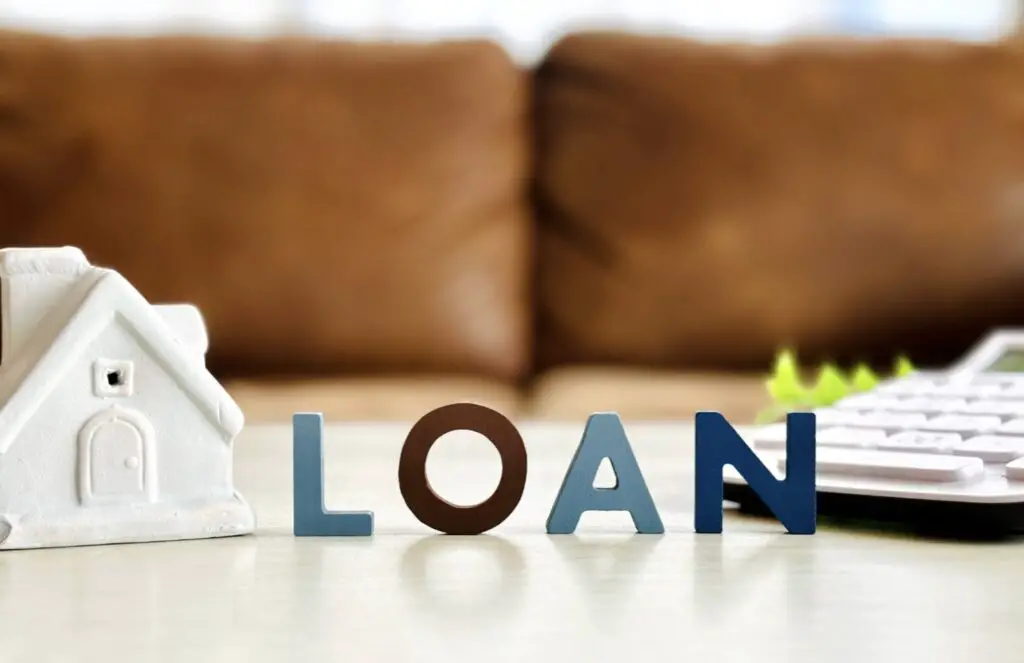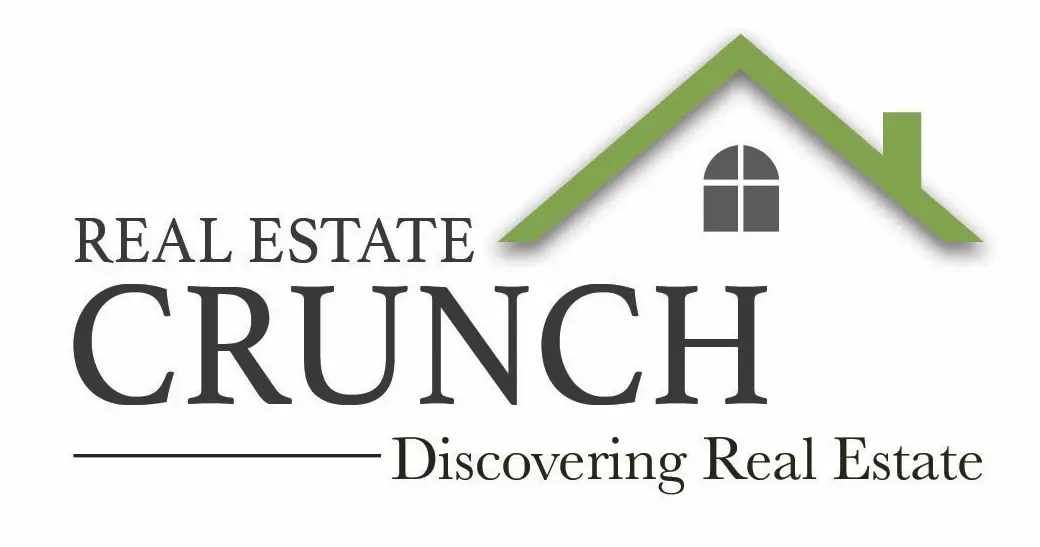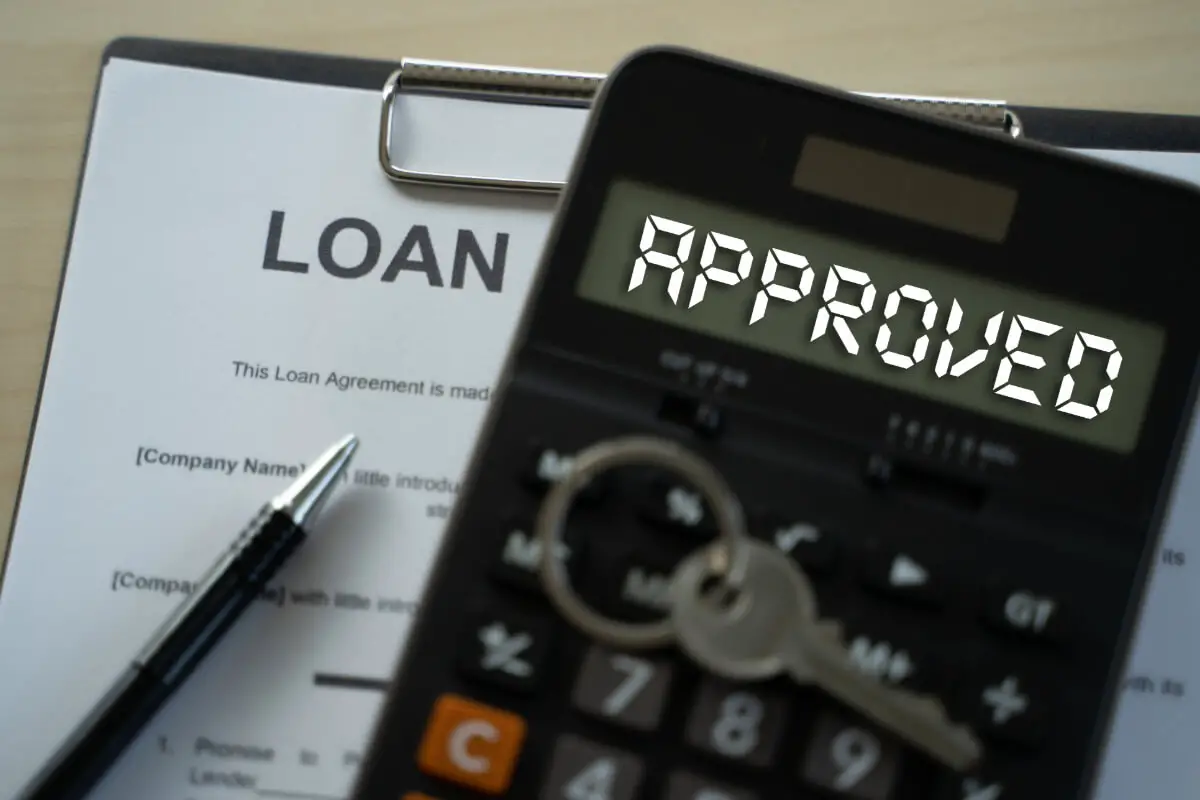A home is not merely a place of residence but a significant investment that embodies stability and a vision for the future. Navigating the financial pathways to homeownership, particularly understanding the complexities of home loans, is essential for prospective buyers seeking to plant roots. The structure of home loans serves as the bedrock of real estate transactions, transforming the dream of homeownership into a reachable milestone. In examining the components of mortgages, such as the principal, interest, and amortization schedule, individuals gain invaluable insights into the long-term implications of borrowing.
Additionally, grasping the variability and impact of interest rates and the inner workings of the loan approval process equips buyers with the knowledge to make informed decisions. The landscape of home financing is vast, with diverse options ranging from government-backed loans to conventional private-sector alternatives, each presenting unique advantages and considerations that shape the borrower’s journey. As we embark on this exploration, it is essential to comprehend the financial mechanisms at play to ensure a more secure and prosperous homeownership experience.
Table of Contents
- The Structure of Home Loans
- Understanding the Framework of a Residential Mortgage
- Fundamentals of a Residential Mortgage
- Principal and Interest
- Mortgage Term and Amortization
- Interest Rates and Types of Mortgages
- Down Payment and Equity
- Private Mortgage Insurance
- Role of Government-Sponsored Enterprises
- Types of Loans
- Closing Costs
- Interest Rates and Their Impact
- The Loan Approval Process
- The Intricacies of Home Loan Approval Processes
- Creditworthiness and Risk Assessment: The Bedrock of Loan Approval
- Income Verification and Debt-to-Income Ratio Analyses
- Property Appraisal: A Pillar of the Loan Approval Edifice
- Titles and Legal Scrutiny: Avoiding Entanglement in Encumbrances
- Employment and Stability: Indicators of Long-Term Solvency
- Government and Private Mortgage Options
- Related Question
The Structure of Home Loans
Understanding the Framework of a Residential Mortgage
The concept of a residential mortgage serves as a cornerstone in the realm of personal finance and home ownership. This financial mechanism is not just a path to acquiring a living space but stands as a pivotal economic anchor, fostering community stability and personal wealth accumulation.
Fundamentals of a Residential Mortgage
At its core, a residential mortgage represents a loan agreement where the borrower pledges real property to secure a loan from a lender, usually a bank or financial institution, to purchase a home. The terms ‘mortgage’ and ‘home loan’ are frequently interchanged; however, they are distinct—the mortgage technically being the lien on the property, while the home loan is the borrowed capital.
Principal and Interest
The primary components of a residential mortgage include the principal and the interest. The principal refers to the original money borrowed to purchase the property. The borrower must make payments throughout the loan term, gradually reducing the principal amount. Interest, conversely, is the charge levied by the lender for the service of lending money—calculated as a percentage of the principal.
Mortgage Term and Amortization
The mortgage term delineates the duration the borrower agrees to repay the loan. Standard terms span 15 to 30 years, with variations influenced by economic conditions and borrower preferences. Parallel to this is the concept of amortization, a schedule that establishes the proportion of each payment applying to principal versus interest over the life of the loan. Initially, payments are heavily skewed towards interest, with the balance tipping in favor of the principal as one approaches the term’s end.
Interest Rates and Types of Mortgages
Interest rates on residential mortgages may be fixed or adjustable. A fixed-rate mortgage secures the interest rate for the loan’s entirety, guaranteeing consistent monthly payments. However, an adjustable-rate mortgage (ARM) is subject to change by market rates. An ARM might appeal for its lower initial payments, but it introduces the risk of rate increases over time.
Down Payment and Equity
A down payment constitutes a percentage of the home’s purchase price, paid upfront by the borrower. This figure typically ranges from 3% to 20%, impacting both the size of the loan and the need for mortgage insurance. Equity refers to the home’s value owned outright by the borrower, a sum that burgeons with each payment made and as market value appreciates.
Private Mortgage Insurance
Lenders often require private mortgage insurance (PMI) to safeguard against default for those unable to furnish an ample down payment. PMI is a supplementary cost until the borrower attains a certain level of equity, usually 20% of the home’s value.
Role of Government-Sponsored Enterprises
Government-sponsored enterprises (GSEs) such as Fannie Mae and Freddie Mac play a substantial role in the mortgage industry by purchasing mortgages from lenders and selling them as mortgage-backed securities. This process injects liquidity into the mortgage market, facilitating more lending opportunities.
Types of Loans
Aside from conventional loans, government-insured options like Federal Housing Administration (FHA) loans cater to borrowers with modest credit scores or down payments. The Department of Veterans Affairs (VA) offers loans to qualifying service members and veterans, sometimes without requiring a down payment.
Closing Costs
Closing costs must be considered when finalizing the mortgage process. These encompass a variety of fees related to processing, underwriting, establishing the mortgage, and preparing and recording the legal documents.
A residential mortgage is a structured financial product intricately designed to balance lenders’ interests with borrowers’ aspirations. Its meticulous construction ensures that, with disciplined payment, borrowers can ultimately achieve full ownership of their homes while lenders maintain repayment assurance. This delicate interplay is fundamental to the fabric of residential property ownership, underscoring the importance of understanding the intricacies of mortgage frameworks.

Interest Rates and Their Impact
The Interplay of Interest Rates and Home Loan Mechanics
Delving into the intricacies of home loan dynamics, one must consider the pivotal role of interest rates – the unseen yet powerful force behind the curtain. Interest rates operate as the heartbeat of the mortgage landscape, influencing monthly payments and shaping the broader housing economy.
Influence on Monthly Payments and Total Cost
At the crux of home loan dynamics lies the borrower’s monthly payment, which is intricately tied to the prevailing interest rate. As rates descend, homeowners bask in the glow of reduced payments, given that a smaller portion of their remittance services the interest. Conversely, an upward rate shift can squeeze household budgets, as more of the homeowner’s financial resources are allocated toward the cost of borrowing.
The home’s total cost over the amortization period also sways to the rhythm of interest rates. Lower rates may result in tens of thousands of dollars saved over the life of the loan. Therefore, rate variations present a long-term financial impact, affecting the overall affordability of homeownership.
Loan Affordability and Borrowing Capacity
Interest rates stretch beyond monthly dues; they influence a borrower’s capacity to secure a loan. Financial institutions look at a borrower’s income relative to their prospective loan payments–a measure known as the debt-to-income ratio. The pressure of higher interest rates can diminish borrowing power, restricting access to higher loan amounts or more desirable properties. Conversely, lower rates can boost this purchasing prowess, availing a more extensive selection of homes within financial reach.
Refinancing Options
The pendulum of interest rates swings, and with it swings the attractiveness of refinancing. Homeowners may leap at the chance to refinance their mortgages when rates dwindle, sealing in long-term savings or perhaps shortening their loan term. This maneuver can provide liquidity and increase equity accumulation, yielding considerable financial advantage.
Market Dynamics and Housing Demand
Interest rates heavily color the canvas of housing demand. Affordable borrowing costs can entice a surge of buyers, fueling competition and potentially elevating property values. The opposite is true when rates climb: a potential cooling effect on buyer enthusiasm can arise, leading to a softer market with more negotiable prices.
Variable Vs. Fixed-Rate Mortgages
Borrowers face a strategic decision between fixed-rate mortgages, with their steadfast predictability, and variable-rate mortgages, with rates that ebb and flow with market currents. The latter poses a gamble; initial lower rates can creep upwards, thereby swelling monthly payments unexpectedly. However, if rates trend downwards, so will the payments, affording the borrower inadvertent fiscal relief.
Invariably, interest rates serve as the lifeblood of home loan dynamics, with the capacity to make or break homeownership aspirations. It is a dance where timing is key, monetary policy orchestrates, and potential homeowners’ hopes and apprehensions are delicately balanced. Monitoring these rates with the attentiveness of an experienced conductor can harmonize the journey to owning a home, ultimately realizing the dream with a symphony of smart financial planning.

The Loan Approval Process
The Intricacies of Home Loan Approval Processes
Delving into the home loan approval procedures, one must navigate a labyrinth of checks and balances that banks and lenders meticulously construct. This comprehensive examination must lay bare the foundational elements that constitute this procedure. The essence of this endeavor is twofold: to assess the creditworthiness of prospective homeowners and to predict the risk associated with lending substantial sums for property acquisition.
Creditworthiness and Risk Assessment: The Bedrock of Loan Approval
Creditworthiness is the cornerstone of home loan approvals. It encapsulates an individual’s historical financial behavior and becomes synthesized into a metric—the credit score. Lenders scrutinize these scores as they offer a distilled representation of an applicant’s fiscal trustworthiness. A high credit score bespeaks a legacy of consistent bill payments, judicious debt management, and prudent financial stewardship.
Conversely, lower scores may raise red flags. They can signify a track record of missed payments or defaults and may typify an applicant teetering on the brink of fiscal liability rather than stability. Insofar as lenders divine a portrait of potential risk from the past, they remain vigilant about not casting their fortunes with customers likely to falter in meeting monetary obligations.
Income Verification and Debt-to-Income Ratio Analyses
Lenders meticulously verify income, a prime indicator of an individual’s loan repayment capacity. Pay stubs, tax returns, and employment history depict financial stability and predictability. This documentation offers lenders empirical data on which to form judgments about an applicant’s earning trajectory and sufficiency to defray monthly mortgage obligations.
Calculating the debt-to-income (DTI) ratio—a potent indicator of fiscal health or malaise—is closely yoked to income verification. DTI ratios delineate the proportion of a borrower’s income preordained for debt servicing and, by analogy, what might be comfortably allocated to a new housing loan. Lenders typically adhere to established benchmarks, eyeing ratios that do not exceed prescribed limits to ensure that borrowers are not overleveraged.
Property Appraisal: A Pillar of the Loan Approval Edifice
The appraisal serves a dual purpose within the loan approval apparatus. It protects both the lender’s investment and the borrower’s equity. A licensed appraiser bestows an independent valuation; this figure sways the maximum loan a lender is prepared to propound. Crucial to this process is ensuring that the loan amount does not surpass the actual value of the property—a crucial safeguard against financial loss should a foreclosure become inevitable.
Titles and Legal Scrutiny: Avoiding Entanglement in Encumbrances
Before consummating a loan for a home purchase, a thorough examination of the property’s title is paramount to ensuring the absence of any legal encumbrances. These due diligences safeguard against potential future disputes that could eclipse the lender’s priority claim over the property. Title searches and insurance protect both lender and buyer from unforeseen legal pitfalls.
Employment and Stability: Indicators of Long-Term Solvency
Employment status, longevity in one’s career, and the stability of the employment field constitute additional strata of the loan approval process. Lenders examine these aspects to forecast the applicant’s job security. In the temporary and ever-shifting sands of economic fortunes, these indicators are the most reliable prognosticators of unwavering income flow—a lifeline for sustaining mortgage commitments over time.
The loan approval process is a layered and intricate gestalt dictated by principles of fiscal responsibility and safeguarded against an ever-present horizon of risk. Each element—creditworthiness to income stability—is a critical cog in the overarching mechanism determining loan viability.
The granular detail with which potential homeowners are assessed before being granted a substantial sum reflects a rigorous commitment to financial prudence and protecting individual and institutional investments. Understanding these root determinants gives a comprehensive view of the home purchasing journey’s multifaceted considerations.

Government and Private Mortgage Options
In the intricate tapestry of home ownership, the threads of financing options form a complex weave of government and private sector alternatives. Prospective homebuyers stand at the nexus of these options, seeking pathways to the security and stability that a home provides. The journey towards acquiring a residence involves a multi-faceted consideration of available mortgage alternatives, each with unique attributes and eligibility criteria.
Government-Backed Loan Options
Government-supported loans emerge as an essential facet of the home loan constellation. They are characterized by more lenient lending standards and government assurance, which mitigates the risk for lenders and translates into favorable terms for borrowers.
- FHA Loans: The Federal Housing Administration (FHA), a branch of the U.S. Department of Housing and Urban Development (HUD), offers loans that require lower down payments and are more accessible to buyers with subpar credit scores. FHA loans are a beacon of hope for first-time homebuyers navigating the ebbs and flows of financial readiness.
- VA Loans: Tailored specifically for veterans, active-duty service members, and widowed military spouses, VA loans are a tribute to the sacrifices of military personnel. These loans offer the exceptional benefit of zero down payment requirements and no private mortgage insurance, underscoring the nation’s gratitude to its service members.
- USDA Loans: Administered by the U.S. Department of Agriculture, these loans target rural and suburban homebuyers who meet specific income criteria. Emphasizing the USDA’s dedication to rural development, these loans often require no down payment and offer lower interest rates.
Private Sector Loan Options
The private sector unfurls its spectrum of loan products, each with distinct parameters catering to borrowers’ diverse financial backgrounds and home-buying aspirations.
- Conventional Loans: Unlike their government-backed counterparts, conventional loans usually require a higher down payment. Nevertheless, they offer a wider range of options, catering to borrowers with robust credit scores and stable financial histories.
- Jumbo Loans: For those setting their sights on high-priced or luxury properties, jumbo loans are the proverbial vessels, allowing for larger borrowing limits that exceed the standards set by government-sponsored enterprises. They are tailored for buyers with strong financial foundations and credit scores that shine with reliability.
- Adjustable-Rate Mortgages (ARMs): ARMs are the chameleons of the mortgage world, offering initial low-interest rates that adjust with market trends over time. These loans appeal to those who can navigate the shifting sands of interest rates or anticipate a short-term habitation before the rates reset.
- Interest-Only Mortgages: These alternatives offer a period where borrowers pay only the interest on the loan. They present an intriguing option for those expecting future income growth. This allows a lower initial payment, deferring the principal balance to a later phase of financial steadiness.
Each of these loan alternatives responds to homebuyers’ distinct needs and circumstances. They are shaped by policy and private sector ingenuity alike to create avenues of homeownership opportunities. Yet, understanding their nuances requires consumers to sift through a landscape of regulations, rates, and requirements—a task necessitating a discerning and informed approach.
As certainties in life are few, the quest for a home—a sanctuary of stability—compels a thorough exploration of these diverse financial conduits. The consideration of government and private sector loan options represents more than a mere financial transaction. It’s the meticulous crafting of a future rooted in the foundations of a place we call home.

The pathway to homeownership is a mosaic of financial decision-making, policy understanding, and personal commitment. As buyers traverse this landscape, equipped with a deeper understanding of home loans, they are better positioned to make choices that resonate with their long-term aspirations.
The interplay of government and private mortgage options, coupled with an individual’s fiscal readiness, has profound implications for the success of the home-buying process. With this comprehensive overview, potential homeowners are empowered to approach the milestone of property ownership with confidence, foresight, and the requisite knowledge to secure a foundation for their future—one brick, one loan, and one dream at a time.
Real Estate Crunch gives you real property and real estate information and advice. We offer a free monthly newsletter; you can sign up for our newsletter by clicking here.
We also have a weekly podcast called “Real Estate Crunch,” found on all major podcast platforms. Listen to our podcast by clicking here.
Follow us on our social media platforms – Facebook and Instagram.
Related Question
Faster, Cheaper, And More Efficient: Benefits Of Prefab Homes
Prefab homes are the new way of building houses and other buildings. Pre Fab homes are built entirely or partly off-site, assembled, and placed on the foundation. This has many advantages to building houses with more advanced technologies and materials. This means homes can usually be built quicker and cheaper than a standard-built home.
By clicking here, you can read more about Faster, Cheaper, And More Efficient: Benefits Of Prefab Homes.
Prefab Vs. Modular Homes Explained
Prefab housing is prefabricated housing built in a factory-controlled setting and assembled on-site. Modular homes are also made in a factory study and assembled on-site, except modular homes usually refer to homes where more complete sections are built on-site.
By clicking here, you can read more about Prefab Vs. Modular Homes Explained.
Prefab Homes Delivered & Setup: Modern Solution For Housing
Prefab homes are built in factories using standardized components; these homes are delivered to the buyer’s desired location either fully or partially finished, ready for quick assembly onsite. With companies offering delivery and setup services, the process has become even more streamlined, eliminating the need for costly tradespeople and reducing wait times.
By clicking here, you can read more about Prefab Homes Delivered & Setup: Modern Solution For Housing.

